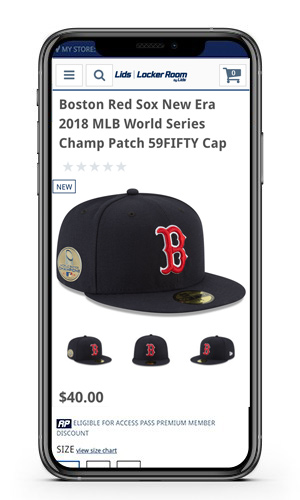Personalization has been around for a long time and has been one of the hottest buzzwords for the last few years. Why? Because, at the most basic level, it makes sense. Delivering the right experience, with the right content, for the right person, at the right time, when they are most engaged leads to higher conversions.
If you’re a 20-year-old female living in southern California, you may have different interests than, say, a 55-year-old female living in Maine. A company that can recognize those differences when customers visit its website and provide content, product recommendations, and promotions that fit what they’re looking for has a better chance of converting than a company that provides the same exact experience to every single visitor.
Digital marketing technology has redefined segmentation possibilities in the age of mass media, allowing companies to create personalized experiences like this for customers on a grand scale. With access to customers’ general location, online history, preferences, and behaviors, you can gain a data-driven understanding of your customers and segment your marketing on an individual basis, rather than making assumptions about what they want and hoping for the best.
Laying the foundation for personalization
Creating personalized experiences for individual customers may seem overwhelming, but it doesn’t have to be. On the flip side, however, many companies are trying to jump into complex personalization too quickly after setting up their personalization and conversion testing tools, without laying the strategic groundwork first. In order to conduct personalization effectively and show a positive ROI, proper planning for your strategy, data integrations, analytics, and user experience is crucial.
When we work with clients on their journeys to personalization, we guide them through our Personalization Spectrum, an iterative approach that takes them from crawling to walking with rules-based personalization, and then to running and flying with automated personalization. This allows them to start small and grow their personalization strategies over time.
Where to begin on your journey to personalization
If you are just getting started with personalization here are three tips to ensure your efforts are successful.
1. Test everything
Every idea you have for personalizing your customer experience is an experiment, meaning that your hypothesis should be constantly measured and improved, with the end goal of finding the sweet spot where you’re improving the customer’s experiences while also accomplishing your business goals.
Ensure that each new personalization experience is going to improve your website by testing it first. You can do this by splitting the traffic 50/50 and comparing the results of the personalized experience to your existing experience, or by directing a small amount of your traffic to the new experience to determine the ROI of the personalization effort, and whether it is worth continuing to develop.
As you make changes to your customer experience, use analytics to gather insights and make decisions. Then, repeat. Personalizing through many iterations of testing and analysis will help you reach the best possible outcomes for both your customers and your bottom line.
2. Try product and content recommendations
Providing personalized content to your website visitors, based on data such as user preferences, browser history, or search interests, is one of the easiest ways to improve their customer experience.
On eCommerce sites, personalized product recommendations can also provide an increase in revenue by upselling and cross-selling products that fit their interests, as well as by reminding customers about products they’ve looked at previously. In fact, according to Monetate Research, “customers who click on a recommended product have a 70% higher purchase rate (at 10.5% versus 6.2%) within that session. That lift in purchase rates also carries over to return sessions, though it does drop some – to 55%.”
The sports apparel retailer Lids provides a good example of using location to personalize the experience. If a person located in the Boston area visits the website, the company’s personalization tools will recognize that location and respond by showing merchandise for the local teams, such as this Boston Red Sox cap.

Another example of this would be an apparel company that uses geolocation data to personalize the style of clothing based on where the customer lives and the climate there. You may be able to sell bathing suits all year long in Florida, but that would obviously not make sense in Minnesota in November. By personalizing the content and recommendations based on what you already know about your customers, you can make the most of each online interaction with them.
3. Personalize your landing pages
Use your landing pages to deliver personalized content, images, headlines, and offers that is specific to the advertising your company is paying for. Matching the content of your landing pages to the advertisements that are sending the traffic has been proven to increase engagement and conversion rates. You can also personalize the landing pages your email campaigns lead to for the same effect.
As you move toward more advanced landing pages, you can use personalization to automatically create dynamic pages with real-time messaging, and then automate the process based on the success of specific metrics. Testing variations of these personalized landing pages will help you improve your conversion rates and better achieve your website goals.
As you do all of this, remember: Have a plan, follow a roadmap, and use data to make decisions. You don’t have to (and shouldn’t) guess or assume that something is going to be successful; always use conversion testing and analytics to drive your business and website improvements.
Ready to take the next step towards effective personalization?
Get a complimentary evaluation of your digital experience strategy…

